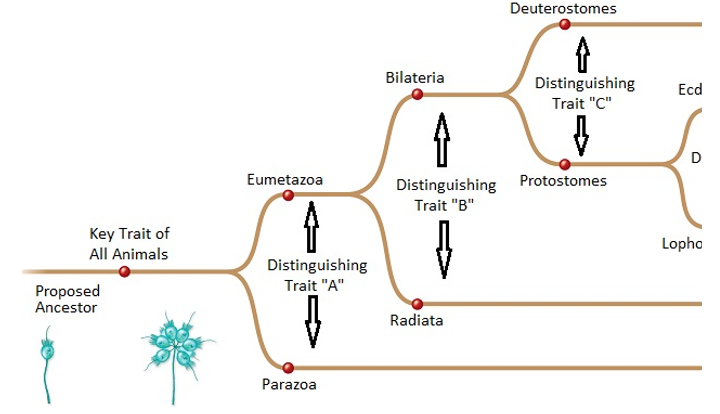Multiple Choice
Figuer:
Main animal groups are noted at the right. Names diverging at each node are morphological or body form names. Note that the animal traits key to distinguishing the groups and body forms are not shown. 
-The distinguishing animal trait "A," that separates the body forms of the Eumetazoa and the Parazoa is
A) whether it is the mouth or the anus which forms first from the opening in the developing embryo.
B) whether or not the animal has true tissues.
C) whether the animal must periodically molt in order to grow, or has characteristic soft larval stages.
D) whether the animal has bilateral symmetry and three germ layers, or radial symmetry and two germ layers.
E) None of these answer options is correct.
Correct Answer:

Verified
Correct Answer:
Verified
Q42: An accurate contrast between radial and bilateral
Q43: Figuer: <img src="https://d2lvgg3v3hfg70.cloudfront.net/TB4116/.jpg" alt="Figuer: -The
Q44: In most species, the female frog lays
Q45: All of these animals are mollusks except<br>A)
Q47: Amphioxus is an example of a<br>A) hagfish.<br>B)
Q48: Figuer:<br>Main animal groups are noted at the
Q49: Which of the following are characteristics of
Q50: Flukes and tapeworms belong to the phylum
Q51: Centipedes,earthworms,and roundworms all illustrate segmentation.
Q61: Some animals are autotrophs.